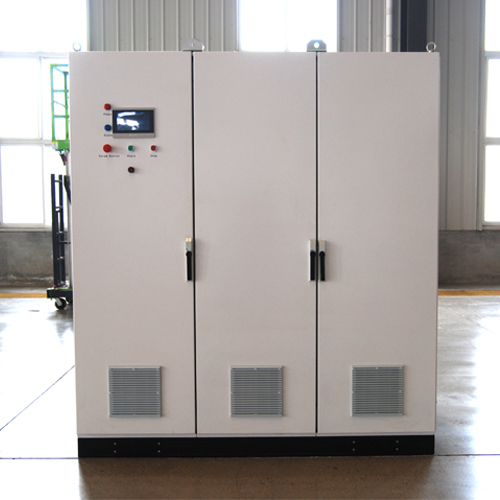Application of ozone sterilization in swimming pool water treatment
We often see news reports about poor swimming pool water quality and odors, leading to illness. This raises the issue of pool water disinfection. This article explains the advantages of using ozone generators for pool water disinfection.
Since its discovery, ozone, a powerful oxidant second only to fluorine and a highly effective broad-spectrum disinfectant, has been widely used in swimming pool water treatment and disinfection systems. Public swimming pools in Europe and North America primarily use ozone for disinfection, with over 500,000 in the United States and widespread use across Europe. Ozone disinfection of swimming pools is moving from the exclusive domain of the elite to the mainstream.
Powerful Bactericide
Ozone is a highly active oxidant with a strong oxidizing power. Its bactericidal effect is rapid, typically killing bacteria, viruses, spores, and insect eggs in water within seconds, effectively preventing the spread of infectious diseases. Experiments have shown that ozone, at the same concentration, is 600-3000 times more effective than chlorine in killing bacteria and viruses. At an ozone concentration of 1mg/l, it only takes 5 seconds to inactivate fecal Escherichia coli, while the same concentration of chlorine would require 15,000 seconds to achieve the same effect. Rapid destruction of chlorine-resistant spores and F phages is particularly important, and viruses that are resistant to chlorine, such as ADIS and pinkeye virus, can be completely eliminated.
Environmentally Friendly Green Disinfectant
Ozone is an internationally recognized environmentally friendly green disinfectant. The ozone disinfection process for swimming pool circulating water is a complete oxidation process, with dissolved oxygen as the only product. It does not increase harmful substances or salinity in the water, nor does it cause any secondary pollution to the environment. Traditional swimming pool chlorination requires the addition of large amounts of chlorine-containing disinfectants to achieve the desired disinfection effect. Chlorine reacts with organic matter in the water to produce various chlorinated organic compounds, such as chloroform and chloroform, which are recognized carcinogens and mutagens.
Improved Health and Comfort
Using ozone disinfection in swimming pool water treatment eliminates the formation of chloramine compounds, fundamentally preventing the production of unpleasant, carcinogenic halogenated organic compounds like trihalomethanes (THMS). These chloramine compounds can irritate the skin, eyes, and respiratory tract of swimmers and athletes, causing red eyes and rash during swimming. They can also have a bleaching effect on hair. Swimming pools disinfected with ozone eliminate this problem, allowing swimmers to enjoy a comfortable and worry-free experience. During the treatment process, residual ozone in the water returning to the pool does not exceed safety limits. The ozone also sterilizes and purifies the air, ensuring fresh and comfortable indoor air.
Degradation and Removal of Water Pollutants
Chlorine-disinfected swimming pools can cause organic matter, particularly ammonia nitrogen (urea), to exceed normal levels by several times, causing water deterioration. This is because filtration cannot remove dissolved organic matter, and chlorine cannot decompose organic matter like ammonia nitrogen. Ozone disinfection systems, due to its strong oxidizing properties, react with organic matter in the water, effectively breaking down humus and light-scattering microorganisms. This prevents the accumulation of organic pollutants, improves water quality, decolorizes water, and oxidizes iron and manganese ions, thereby degrading pollutants and purifying the water. This significantly improves the water's appearance and clarity, giving the pool a beautiful light blue hue. The water quality fully meets the standards of FINA and the World Health Organization. Chlorine, on the other hand, does not have this effect.
Significantly Reduces Chemical Consumption
When using chlorine disinfection, the addition of chlorine inevitably causes a pH change in the water, which can cause discomfort. Therefore, large amounts of alkaline or acidic chemicals must be added to neutralize the pH. High temperatures and high traffic levels often lead to poor water quality, necessitating the addition of large amounts of chlorine. Ozone, however, is a neutral substance and does not cause this problem. Ozone ensures stable water quality during periods of high traffic and high temperatures. However, due to its short half-life, ozone cannot remain in the water for long periods of time. Therefore, a small amount of chlorine-containing fungicide must still be added as a supplemental long-term disinfectant, but the amount of chlorine added can be reduced by over 65%. Furthermore, ozone has a micro-flocculating effect, so under normal traffic conditions, flocculants can be omitted. Under certain operating conditions, such as countercurrent circulation and the absence of activated carbon filters, ozone can even be used as the sole water treatment agent without the addition of chlorine preparations, flocculants, or pH adjusters.
ozone swimming pool water treatment
Reduces Corrosion of Facilities
Hypochlorous acid and its derivatives produced by chlorination can severely corrode swimming pool equipment and structures, such as grids and heating systems. However, with ozone disinfection, the amount of chlorine disinfectant used is significantly reduced.
More Convenient and Safe to Use
Ozone is produced from oxygen in the air, an inexhaustible source. Therefore, there are no concerns about handling or storage during the production process. Ozone generators are very simple to operate and use, offering high safety, and their daily management and maintenance are relatively simple. Chlorine preparations are dangerous during transportation, storage and use.





